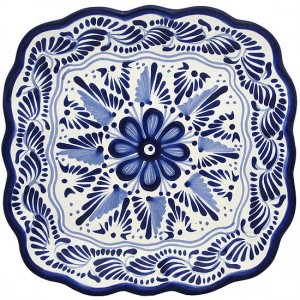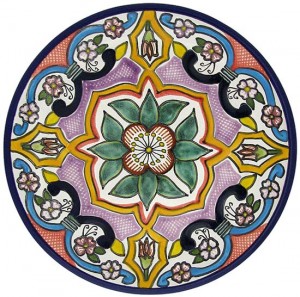 Traditional glazed pottery from Puebla (Mexico) known as “Talavera” inspired by the Spanish origin of Talavera de la Reyna, is in no danger to the invasion of imitations from China, said an expert in this field.
Traditional glazed pottery from Puebla (Mexico) known as “Talavera” inspired by the Spanish origin of Talavera de la Reyna, is in no danger to the invasion of imitations from China, said an expert in this field.
Businesswoman Angelica Moreno, owner of the Mexican workshop Talavera de la Reyna said at a news conference that copies of Talavera crafts have a lower quality than Mexican so he is not worried trying to compete with them.
Comments were made at the Franz Mayer Museum in Mexico City concerning the presentation of the exhibition “Alarca. Talavera Contemporary. Glazed pottery”, which will be open until September 30.
Moreno criticized the Chinese ceramics, which he considered “horrific” and said anyone who knows poblana wouldn’t buy a Chinese ceramic product.
The specialist says it takes more than three months to make a good Mexican talaverana piece and a technique that has more than four centuries old is employed.
The name “Talavera” in Mexico is used to designate any object with white glazed ceramic tin and metal oxides, following the techniques introduced in Mexico by the Spanish potters during colonial times (1521-1821).
He added that another thing they have going for 16 Talavera workshops based in Puebla is the denomination of origin, obtained in 1997 and a hologram that distinguishes each piece, which gives security to the buyer that they are purchasing an original piece.
Article Source: El Siglo de Torreon
On the exhibition that will open he said includes more than 70 pieces of pottery made in his workshop and based on designs of 55 Mexican artists.
Among them are Juan Soriano, Francisco Toledo, Vicente Rojo, Javier Marin Paloma Torres, Besabeé Romero and Germán Montalvo.
He praised the contributions of these artists for their uniqueness and because they have enriched the work of Mexican artisans making their way to renew their pieces.
Among those on display will be a car, lenses, dolls, vases, plates, cups, sculptures and pieces of crockery.
The expert noted that the pieces were made in the last fifteen years and are part of a valuable collection of workshop Reyna has been exhibited in Puebla and in Beijing.

